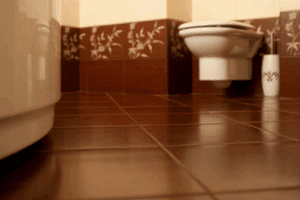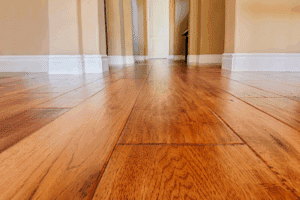When it comes to upgrading your floors, one big question always comes up: tile vs hardwood floors, which is better for your home in Windsor?
The tile vs hardwood floors debate isn’t just about style; it’s about durability, maintenance, climate suitability, and budget. If you’re feeling stuck between the warmth of wood and the versatility of tile, you’re not alone. Many homeowners wrestle with this exact decision.
The good news? By understanding the pros and cons of each, especially in the context of Windsor’s unique conditions, you’ll be one step closer to choosing the perfect flooring for your home.
Quick Comparison: Tile vs Hardwood Floors
Here’s a side-by-side look at how tile and hardwood flooring compare in the areas that matter most to Windsor homeowners:
|
Category |
Tile |
Hardwood |
| Durability | Highly durable; resists scratches, dents, and moisture | Durable, but prone to scratches and water damage |
| Water Resistance | Excellent—great for bathrooms and kitchens | Poor—sensitive to moisture and spills |
| Climate Suitability | Stable year-round; no expansion/contraction | Can swell/shrink with humidity changes |
| Comfort | Hard and cool; can be paired with radiant heating | Warm and comfortable underfoot |
| Design Flexibility | Unlimited patterns, finishes, and sizes—including wood-look tiles | Timeless natural beauty with stain and plank choices |
| Cost (Material + Install) | Moderate to low | Higher upfront investment |
| Maintenance | Easy to clean; grout needs sealing every 1–2 years | Requires special care; refinishing every 7–10 years |
| Lifespan | 20–50+ years with minimal upkeep | 30–100+ years with refinishing |
| Best For | High-traffic, wet, or low-maintenance spaces |
Living spaces where warmth and elegance are a priority |
Performance in Windsor’s Climate

Tile is a top performer in Windsor’s seasonal extremes. It doesn’t expand or contract with temperature or humidity changes, making it an ideal flooring solution year-round. It’s especially practical in spaces exposed to water or snow, like bathrooms, mudrooms, and entryways.
Hardwood flooring is more sensitive to Windsor’s seasonal shifts. It can swell in humid summers and shrink in dry winters. These fluctuations are influenced by indoor air quality and humidity levels, which can affect not just floors but overall home comfort, as explained by the EPA on indoor air quality. With proper indoor climate control, like a humidifier during winter, you can still enjoy the elegance of hardwood, especially in lower-moisture areas like bedrooms and living rooms.
Durability and Daily Life
Tile flooring is built for busy homes. It stands up to spills, dropped items, pet claws, and general wear with ease. If you want flooring that lasts without babying it, tile is a smart choice for high-traffic areas.
Hardwood is durable but not indestructible. It can dent or scratch more easily than tile, especially from furniture, toys, or pets. The upside? Hardwood can be sanded and refinished multiple times, bringing it back to life as needed.

Style and Aesthetic Appeal
With endless design options, stone, marble, cement, and even wood-look tile can match any interior style, from ultra-modern to rustic farmhouse. It’s especially good for bold patterns or seamless minimalist designs.
Few materials match the timeless elegance of real wood. With various plank widths, species, and stains to choose from, hardwood brings warmth, character, and resale appeal to any home.
Budget and Installation
Tile is generally more affordable than hardwood in terms of materials. Installation costs can vary based on layout complexity and subfloor prep. Once installed, tile is a low-maintenance, cost-effective option that won’t require much long-term investment.
Hardwood is more expensive upfront, both in materials and labor. However, it’s also seen as a premium home upgrade that increases resale value. If you’re planning to stay in your home long-term, it may be worth the investment.
Which Flooring Fits Your Lifestyle?
Busy Family with Kids & Pets
Tile – Great for messes, muddy paws, and heavy use. It’s tough and super easy to clean.
Hardwood – Beautiful but more delicate, consider rugs and routine care in high-traffic areas.
First-Time Homebuyer on a Budget
Tile– Affordable and stylish. Great for entry-level remodels that still feel high-end.
Hardwood – Pricier up front, but a long-term investment that adds value if you plan to stay.
Design-Savvy Homeowner
Tile – Go bold with patterns or pick wood-look porcelain for the best of both worlds.
Hardwood – Ideal for lovers of natural materials and that “wow” factor in the main living areas.
Aging-in-Place Renovator
Tile – Great for barrier-free showers, slip-resistant finishes, and radiant heating.
Hardwood – Comfortable, soft underfoot, and warm, perfect for bedrooms and sitting areas.
Maintenance: What You’re Signing Up For
Tile
- Cleaning: Easy—sweep, vacuum, and mop with mild cleaner.
- Grout: Reseal every 1–2 years to prevent staining and mildew.
- Durability: No refinishing needed; highly resistant to daily wear.
Hardwood
- Cleaning: Use wood-safe cleaners and avoid standing water.
- Protection: Add felt pads to furniture, and use rugs in high-traffic zones.
- Refinishing: Plan to refinish every 7–10 years to maintain its beauty.
Conclusion
Deciding between tile vs hardwood floors comes down to your home’s needs and your style. Tile is tough, water-resistant, and great for busy or moisture-prone areas, while hardwood offers natural warmth and timeless appeal, ideal for cozy living spaces.
Both have their strengths, and in many Windsor homes, a mix of the two works best. If you’re still unsure, talking to a local flooring professional can help you weigh your options and choose the right fit for your lifestyle.


